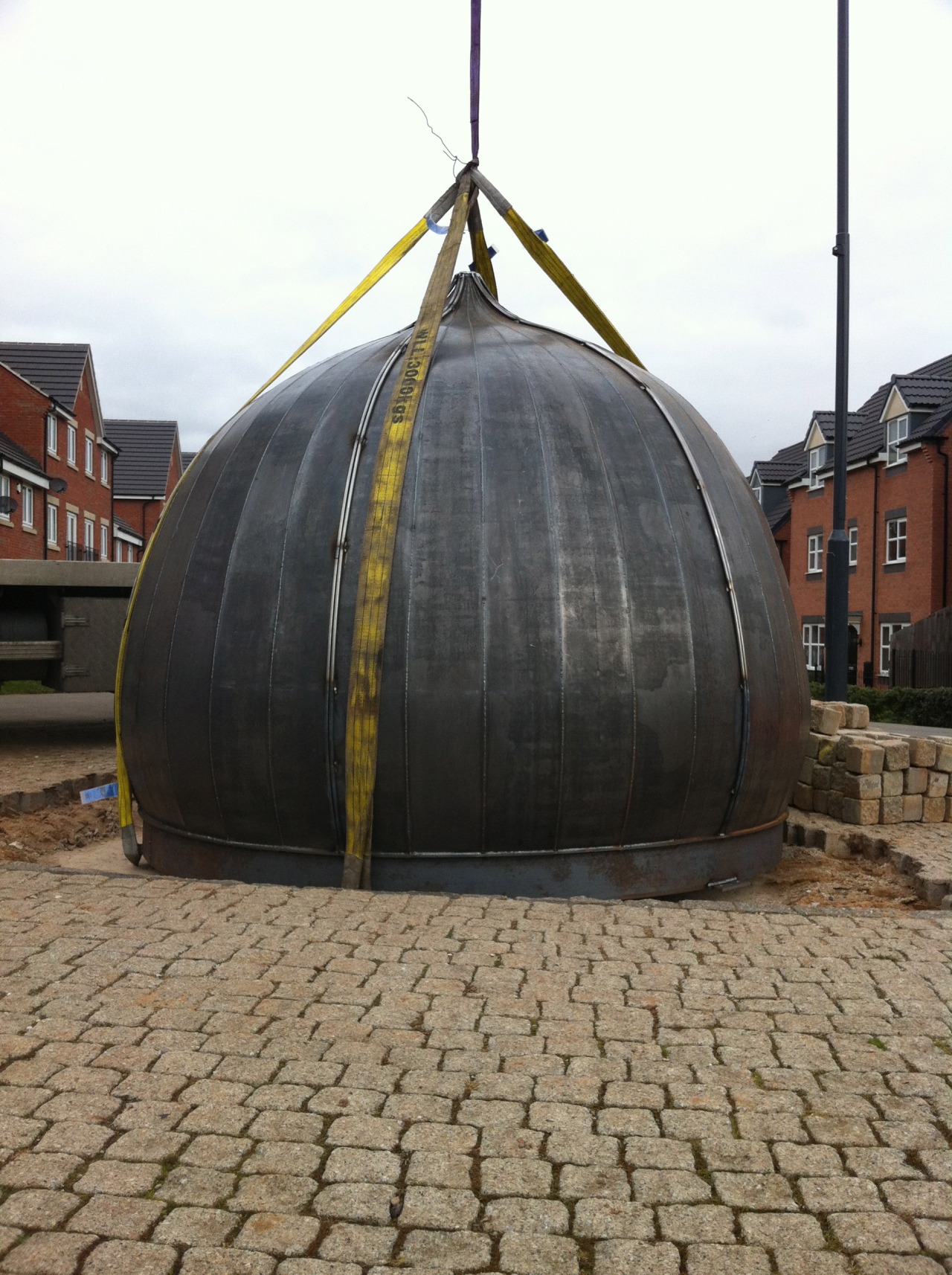The seeds arrive on site at Mickleover and are positioned one by one along the green boulevard.
The seed pod is lowered into place, checked for positioning, and final rests on the foundations.
The Mickleover Sculpture arrives on the lorry and is lifted by crane into place over the foundations
Woven copper v’s woven willow, taken at the RHS London Plant and Design Show
The physical nature of Art and the artist
For a long time now my professional practice has revolved around weaving materials such as willow to create spherical art forms for the landscape, the natural form of the sphere and of willow work hand in hand to create a piece of art that encompasses nature on all levels. But, when you change a singular element of that art work does it continue to have the same effect on the viewer, does the art continue to function as art and most importantly how does this effect the artist?
The latter of the statements is commonly the most overlooked and it for that reason I have chosen to write about it. I will begin with process and materials.
Working with willow on large scale sculpture, you tend to work standing up with the art on a bench, or like me sometimes a disused cable drum. I find myself constantly moving either to the sound of the radio or to the rhythm of conversation whilst working, my feet never stop and my hands, (never with gloves on), are feeling the willow branch as I weave for its malleability seeking out any parts that need extra attention to help it curve in the path of the weave. This dance and weave has been my art form for around 7 years, but recently I have wanted to try out something new, to weave in a new material but retaining the spherical nature of the art form.
Weaving requires a material that can be manipulated into shapes and if that material has a memory then even better as the weave will stay in place after you let go and not, as happens many times, bounce away from the weave and hit you. Perhaps a subtle way to let you know you haven’t woven it properly.
I began with wire lengths in either brass, copper or bronze and began weaving them in the same manor as willow but with the cost of the metal, the overall scale was reduced.
To weave with the wire lengths standing up was difficult so the first change was introducing a chair, which after sitting in it for 6 hours left me feeling very uncomfortable and stiff, I could not move around freely as I usually do and it made me feel very restricted.
The second change was to my fingers and muscles, they have become so accustomed to willow that they also felt constrained and could not move the metal in the same manner.
By nature I am not someone who gives up easily on something and after the first day of weaving metal I felt awful, I was not going to let it get the better of me, so I have persevered with it for 8 weeks so far. Two sculptures later, I still don’t like the changes in my body, I can no longer move my feet around whilst working or talk simultaneously so I have stopped listening to music and have swapped to talk radio stations that broadcast plays. The sound of the actors have soothed my need to get out the chair and move, as well as giving me a new type of rhythm to work to. My hands ache and have begun to get rough patches on the ends of my finger tips from pushing the fine metal lengths into place. But the bounce back from an unsuccessful weave has now been replaced by scratches and pierced skin, so I look like I have been fighting with a cat!
This is not the end to my experiment, only the start, and I will continue to persevere through the changes, but I felt the need to let you know that when you come across a sculpture please consider the blood, sweat and tears that have helped shape this piece of art. The difficulties artists encounter on a daily basis to create something so personal and present it to the world. I wouldn’t have it any other way.
The beginning of a copper hand woven sphere, with interlocking circles forming the base
The finished woven wire sculpture photographed in Victoria Park, Ilkeston on a glorious winters day. The woven sphere measures 350mm and is created from lengths of Aluminium wire.
A fine woven layer is added to the sphere ready for more weaving tomorrow.
The circles form a sphere
Woven circles of Aluminium wire roughly 6cm across are woven together, as each circle is added the form is moulded into a spherical shape.


















